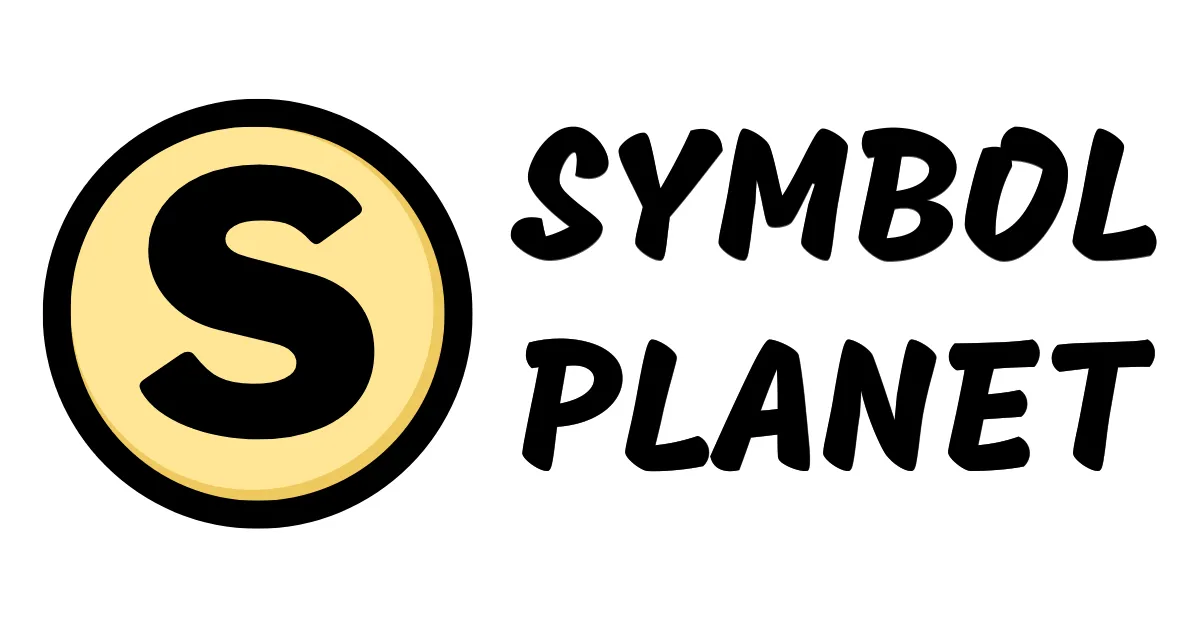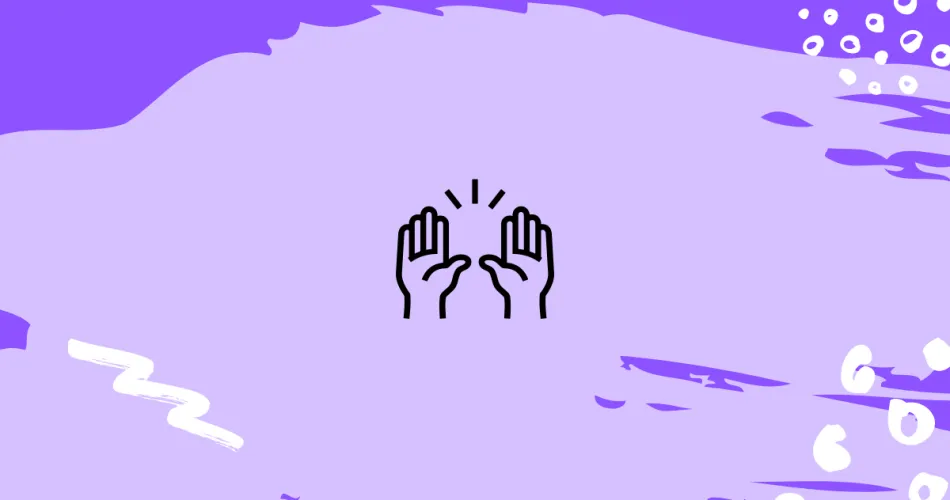Here’s what we’ll cover:
- 🙌 raising hands emoji meaning
- How do you reply to 🙌 raising hands emoji?
- What does 🙌 raising hands emoji mean from a girl?
- What does 🙌 raising hands emoji mean from a guy or boy?
- What does 🙌 raising hands emoji mean on Snapchat?
- What does 🙌 raising hands mean in Texting or Chat?
- What does 🙌 raising hands emoji mean on Instagram?
- What does 🙌 raising hands emoji mean on TikTok?
- What does 🙌 raising hands emoji mean in slang?
- Cultural differences in 🙌 emoji interpretation
- Emoji etiquettes
- Possible combination
- Misinterpretations to avoid
🙌 raising hands emoji meaning
The 🙌 raising hands emoji means expressing joy, celebration, excitement, or gratitude.
Meaning 1: Joy and Celebration
This emoji is commonly used to convey happiness, triumph, or a sense of celebration. It can represent the feeling of accomplishing something great or the excitement of a fun event.
- “Yay! I aced my exam! 🙌”
- “I won the lottery! Party at my place! 🙌”
Meaning 2: Appreciation and Gratitude
People often use the raising hands emoji to express thanks or gratitude. It can be used to show appreciation for a kind gesture, support, or simply to say “thank you”.
- “Thank you for the surprise birthday party! It was amazing! 🙌”
- “I’m so grateful for your help in moving. You’re the best! 🙌”
Meaning 3: Excitement and Anticipation
The emoji can also represent anticipation or eagerness for something upcoming. It reflects the feeling of being thrilled or looking forward to an event or news.
- “Only two days until vacation! 🙌 Can’t wait!”
- “The concert is tonight! I’m so excited! 🙌”
How do you reply to 🙌 raising hands emoji?
To reply to 🙌 raising hands emoji, you can use phrases like “Thank you!”, “Way to go!” or “You nailed it!”.
- “Thank you for your support!”
- “Way to go on finishing that project!”
- “You nailed the presentation!”
What does 🙌 raising hands emoji mean from a girl?
The 🙌 raising hands emoji from a girl means she is expressing excitement, celebration, or applause.
- “OMG, I just got accepted into my dream university! 🙌”
- “Finally finished my final exams! Time to party all night long! 🙌”
- “My favorite band just dropped a new album, and it’s amazing! 🙌”
This emoji is often used to convey enthusiasm, happiness, or support. It’s like giving a virtual round of applause or standing ovation. So, when a girl uses this emoji, she is most likely showing her excitement, cheering someone on, or celebrating a personal achievement. It can also imply a sense of gratitude or thankfulness. In some cases, it’s just a fun way to express joy in a lighthearted and playful manner. So, keep an eye out for this emoji when you want to celebrate with your female friends!
What does 🙌 raising hands emoji mean from a guy or boy?
The 🙌 raising hands emoji from a guy or boy means enthusiasm, excitement, and celebration. This emoji is like the virtual version of a person shouting, “Hooray!” or “Yahoo!” It signifies a big thumbs-up to show support or agreement. Here are some everyday American examples:
- “Dude, you aced that presentation! 🙌”
- “Finally got the promotion I’ve been working for! 🙌”
- “Going to the beach tomorrow! 🙌”
So, whenever you receive a text from a guy or boy with the 🙌 emoji, know that there’s a high-five happening in the digital realm. It’s his way of expressing excitement and cheering you on, so embrace the celebration!
What does 🙌 raising hands emoji mean on Snapchat?
The 🙌 raising hands emoji on Snapchat means celebration, excitement, or a display of praise. It’s like giving a virtual high five or cheering someone on. You can use it when your friend achieves something awesome, like “Congrats on acing that test! 🙌” or “You got the job? That’s amazing! 🙌”. So go ahead and sprinkle some virtual applause on your snaps!
What does 🙌 raising hands mean in Texting or Chat?
The 🙌 raising hands emoji in Texting or Chat means expressing excitement, celebration, or praise. It’s like shouting “Hooray!” or “Yes, I did it!” without the need for actual words. People use this emoji to show joy, support, or to cheer each other on. For example, someone might say “Just got promoted at work 🙌” on WhatsApp or “Our team won the game 🙌” on Twitter. It’s the virtual equivalent of clapping hands, minus the potential for sore palms!
What does 🙌 raising hands emoji mean on Instagram?
The 🙌 raising hands emoji on Instagram means enthusiasm, celebration, or praise. It’s like giving a virtual high-five!
- “Just landed my dream job! 🙌”
- “Got an A on my exam! 🙌”
- “Finally finished that 10-mile run! 🙌”
- “Happy Friday, everyone! 🙌”
What does 🙌 raising hands emoji mean on TikTok?
The 🙌 raising hands emoji on TikTok means celebrating or showing excitement. It is often used to convey applause, praise, or support for someone’s talents or achievements.
- “Wow, this dance is incredible! 🙌”
- “Congratulations on reaching one million followers! 🙌”
- “I can’t believe they pulled off that prank! 🙌”
What does 🙌 raising hands emoji mean in slang?
The 🙌 raising hands emoji in slang means showing enthusiasm, excitement, or celebration. It represents a high-five or the act of cheering for something.
- “I just aced my exam! 🙌”
- “We won the game! 🙌”
- “Friday is here! Time to party! 🙌”
- “Finally booked my dream vacation! 🙌”
Cultural differences in 🙌 emoji interpretation
Cultural differences can cause confusion in the interpretation of the 🙌 raising hands emoji, with its meanings ranging from celebration to prayer. For instance, in America, it can mean “Let’s high five!” while in Japan, it might just mean “I surrender, don’t shoot!”
- “Hey Steve, let’s order pizza tonight!” 🙌 “Absolutely, let’s high five that idea!”
- In a Japanese game show: Contestant: 🙌 “I surrender, don’t shoot!” Host: “No worries, it means you’re safe!”
Emoji etiquettes
When using the 🙌 raising hands emoji, it’s important to follow some guidelines and best practices. Embrace the emoji for celebrations, requests for help, or showing agreement, but avoid using it excessively or inappropriately.
- “After acing my exam, I sent a message to my friends with 🙌 emoji to share my victory.”
- “During our weekly team meeting, my coworker asked for assistance with an emoji of raised hands 🙌.”
- “At the concert, everyone raised their hands 🙌 to show their enthusiasm.”
Possible combination
Possible emoji combinations that go with 🙌 raising hands emoji include 👏 clapping hands, 🎉 party popper, and 🍾 champagne bottle.
- “👏 Let’s give a round of applause for that amazing performance!”
- “🎉 It’s time to celebrate! 🍾 Pop the champagne!”
Misinterpretations to avoid
Misinterpretations to avoid for raising hands emoji: It does not mean “pick me for a high-five” or “surrender in a tickle fight with air quotes.”
- “Hey, look, I got a new promotion! 🙌”
- “The tacos at that food truck were amazing! 🙌”
- “I finally finished my taxes! 🙌”

